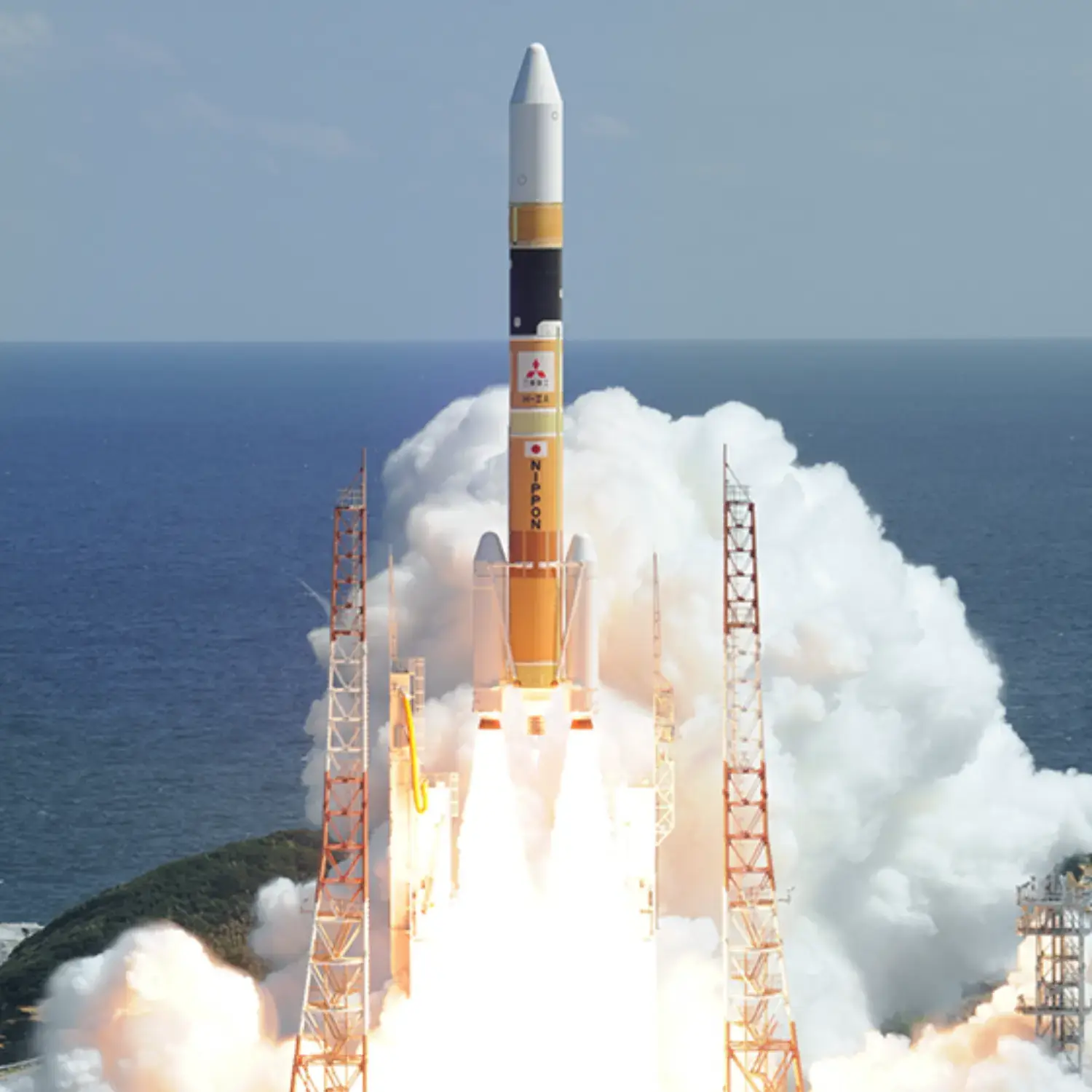/
Shizuku, KOMPSAT 3 & Others
Launch Success
Liftoff Time (GMT)
16:39:00
Thursday May 17, 2012
Watch Replay
Official Livestream
Mission Details
Shizuku
The GCOM-W (Global Change Observation Mission - Water) or Shizuku satellite aims to construct, use, and verify systems that enable continuous global-scale observations (for 10 to 15 years) of effective geophysical parameters for elucidating global climate change and water circulation mechanisms. Water circulation changes will be observed by a microwave radiometer onboard the GCOM-W (Water) satellite (scheduled to be launched in Japan Fiscal Year 2011). The GCOM-W will observe precipitation, vapor amounts, wind velocity above the ocean, sea water temperatures, water levels on land areas and snow depths. Climate change observation will be performed by a multi-wavelength optical radiometer onboard the GCOM-C (Climate) satellite (under consideration) on clouds, aerosol, seawater color (marine organisms), vegetation, snow and ice. These satellites will enable us to perform comprehensive observations of the surface layer of the Earth such as the atmosphere, including clouds, land, oceans and the cryosphere. The Advanced Microwave Scanning Radiometer 2 (AMSR2) is a sensor to observe radiometers, or microwaves emitted naturally from the ground, sea surface and atmosphere, using 6 different frequency bands ranging from 7 GHz to 89 GHz. The strength of a natural microwave is determined by its characteristics and moisture, including the surface condition and temperature of the material. Although it depends on the frequency, the microwave is very weak. AMSR2 will detect such weak microwaves at an altitude of 700 kilometers and measure the strength of them with a very high accuracy. For example, by measuring the strength of a microwave emitted from the sea surface with the AMSR2, one can understand the water temperature of the sea surface to an accuracy of 0.5 degrees Celsius.
Low Earth Orbit
1 Payload
1,991 kilograms
KOMPSAT 3
KOMPSAT 3 (Korean Multi-purpose Satellite 3) is a lightweight Earth observation satellite developed by the Korea Aerospace Research Institute KARI. It will be similar to the KOMPSAT 2 spacecraft and is scheduled to be launched in 2010. The optical component is being developed by Astrium. The imaging insrtrument has a resolution of 70 cm or less in visible band. It will operate at an altitude of 535 km × 552 km, 97.6°, in a sun-synchronous orbit for 4 years and monitor the Korean peninsula using a payload capable of submeter class resolution. The mission objectives of the KOMPSAT-3 are to provide continuous satellite Earth observation after KOMPSAT 1 and KOMPSAT 2 and to meet the nation's needs for high-resolution EO (Electro-Optical) images required for GIS (Geographical Information Systems) and other environmental, agricultural and oceanographic monitoring applications. The improved KOMPSAT 3A with additional infra-red capability was be launched in 2015.
Low Earth Orbit
1 Payload
800 kilograms
SDS 4
SDS 4 (Small Demonstration Satellite 4) is a small technology experiment satellite developed by JAXA. As SDS-1, this small satellite (a cube of 50 kg and 50 cm edge, with a 120 W power available) will test several promising technologies. Unlike the SDS-1 satellite attitude SDS-4 can be controlled on its 3-axis pointing toward the Sun in normal operation phase and to Earth at nadir during his experimental phase. SDS-4 to be launched in 2011 with the GCOM-W1 satellite, and placed on a sun-synchronous orbit at 677 km altitude.
Low Earth Orbit
1 Payload
50 kilograms
Horyu 2
Horyu 2 is a small technological satellite built by Kyushu Institute of Technology (Kyutech). Horyu 2 is testing an experimental high-voltage solar array system and observing corresponding spacecraft charging effects on the satellite caused by the high voltage.
Low Earth Orbit
1 Payload
7 kilograms
Launch Site
Stats
H-IIA
21st
Mission
1st
Mission of 2012
2012
26th
Orbital launch attempt

